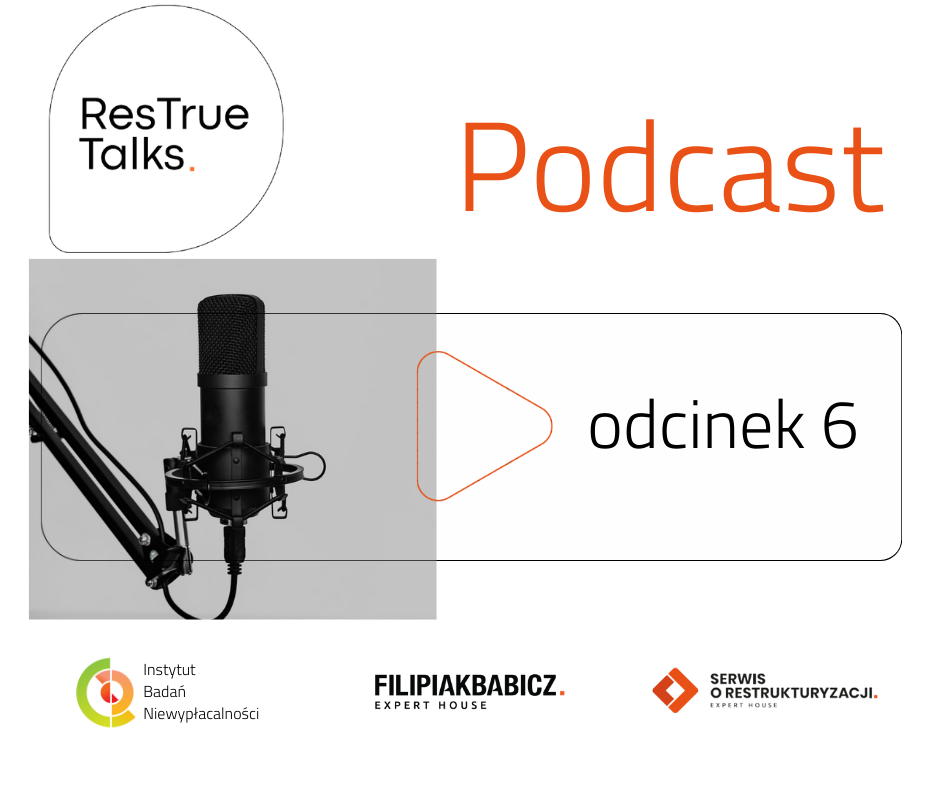
Restructuring proceedings in 2021

Last year, proceedings for approval of an arrangement were the most popular. This trend will continue this year and next year.
The law provides for four types of restructuring proceedings. Such a wide choice allows debtors to tailor the appropriate procedure to their own needs. They enter the restructuring path in different economic situations. Some are at risk of insolvency, others are already insolvent. Therefore, one might expect that the popularity of the various procedures is evenly matched. However, the statistics show otherwise.
PZU and long, long nothing….
Last year, 458 business bankruptcies were declared. In addition, 1,867 restructurings were initiated. With this, the most popular turned out to be proceedings for approval of an arrangement (PZU), of which as many as 1,605 were opened last year. This is as much as 85.97 percent of all restructurings. Next is the accelerated arrangement proceedings, of which there were 151, accounting for just 8.09 percent of the total. In contrast, there were 33 arrangement proceedings (1.77 percent) and 78 sanitation proceedings (4.18 percent).
Thus, PZU and the other types of proceedings are divided by a gap that has arguably widened in 2022. The current year has been marked by the troubled operation of the National Debt Register (NCR). A side effect is the even greater attractiveness of PZU notices. This is because the Notice of Arrangement Day initiating PZU is the only guarantee that restructuring proceedings will be opened within a foreseeable timeframe. The opening of other proceedings requires a court decision. It must be issued through the NCR. Past practice shows that courts handle the use of the register differently.
Information on the total number of proceedings is worth supplementing with an analysis of the popularity of individual proceedings among sole proprietors and companies.
Sole proprietorships versus companies
In Poland in 2021, there will be a little over about 2.5 million sole proprietorships (JDG) and more than 0.5 million companies:
| Form of activity | Number | Share | Share (without JDG) |
| JDG | 2 500 000 | 82,50% | – |
| Partnerships | 73 600 | 2,43% | 13,88% |
| sp.j. | 32 600 | 1,08% | 6,15% |
| sp.p. | 2 400 | 0,08% | 0,45% |
| sp.k. | 35 700 | 1,18% | 6,73% |
| S.K.A. | 2 900 | 0,10% | 0,55% |
| Limited liability companies | 456 693 | 15,07% | 86,12% |
| sp. z o.o. | 448 000 | 14,78% | 84,48% |
| P.S.A. | 293 | 0,01% | 0,06% |
| S.A. | 8 400 | 0,28% | 1,58% |
| Summary | 3 030 293 | 100,00% | 100,00% |
Table No. 1 Forms of business. Own compilation based on the Polish Companies 2021 Report prepared by Transparent Data (https://medium.com/blog-transparent-data/polskie-firmy-2021-raport-340fd0954163).
The largest group was made up of sole proprietors. Among companies, limited liability companies by far dominate (86.12 percent of companies). In the group of capital companies, limited liability companies lead the way. – there are less than 0.45 million of them. The least numerous group are simple joint-stock companies. This is the newest, introduced in the past year, proposed by the legislator among the available forms of business.
Detailed structure of proceedings
Taking into account the above summary, it is worth looking at the detailed entity structure of bankruptcy and restructuring proceedings:
| Form of activity | Bankruptcy proceedings | Proceedings
for approval of an arrangement |
Accelerated arrangement proceedings | Arrangement proceedings | Sanitation proceedings | |||||
| JDG | 98 | 21,40% | 1 018 | 63,43% | 101 | 66,89% | 16 | 48,48% | 50 | 64,10% |
| Partnerships | 32 | 6,99% | 49 | 3,05% | 6 | 3,97% | 1 | 3,03% | 0 | 0,00% |
| – sp.j. | 12 | 2,62% | 25 | 1,56% | 4 | 2,65% | 0 | 0,00% | 0 | 0,00% |
| – sp.p. | 0 | 0,00% | 0 | 0,00% | 0 | 0,00% | 0 | 0,00% | 0 | 0,00% |
| – sp.k. | 19 | 4,15% | 24 | 1,50% | 2 | 1,32% | 1 | 3,03% | 0 | 0,00% |
| – S.K.A. | 1 | 0,22% | 0 | 0,00% | 0 | 0,00% | 0 | 0,00% | 0 | 0,00% |
| Limited liability companies | 310 | 67,69% | 527 | 32,83% | 44 | 29,14% | 16 | 48,48% | 28 | 35,90% |
| – sp. z o.o. | 279 | 60,92% | 485 | 30,22% | 38 | 25,17% | 14 | 42,42% | 23 | 29,49% |
| – P.S.A. | 0 | 0,00% | 0 | 0,00% | 0 | 0,00% | 0 | 0,00% | 0 | 0,00% |
| – S.A. | 31 | 6,77% | 42 | 2,62% | 6 | 3,97% | 2 | 6,06% | 5 | 6,41% |
| Other | 18 | 3,93% | 11 | 0,69% | 0 | 0,00% | 0 | 0,00% | 0 | 0,00% |
| Summary | 458 | 100,00% | 1 605 | 100,00% | 151 | 100,00% | 33 | 100,00% | 78 | 100,00% |
Table No. 2: Detailed structure of the proceedings. Own compilation based on MS data.
The following conclusions can be drawn from the above analysis:
– Despite the predominant number of sole proprietorships, the largest number of bankruptcies were declared against debtors operating in the form of limited liability companies. This is most likely due to the fact that entrepreneurs who are individuals, if they decide to declare bankruptcy, choose the path of consumer bankruptcy. However, this requires the prior termination of business operations. In 2021, 163,056 sole proprietorships were closed.
– Restructuring is primarily used by sole proprietors, due to their large number compared to the number of companies. In addition to composition proceedings, about two-thirds of restructuring proceedings involve sole proprietorships.
– The popularity of proceedings among the entities indicated in Table 2 does not reflect the structure shown in Table 1. Taking into account the proportions shown in Table 1, the share of sole proprietorships in total restructuring proceedings should be higher. This means that entrepreneurs operating in this form are relatively less likely to opt for restructuring. This may be primarily due to the lower sophistication of this type of business, as well as choosing the path of consumer bankruptcy.
– Limited liability companies (and primarily limited liability companies) are relatively more likely to opt for restructuring. This is most likely due not only to the greater economic risks taken within capital companies, but also to the strict liability rules for members of the management board of limited liability companies. (Article 299 of the Commercial Companies Code).
Summary
PZU first operated in the form of a simplified restructuring procedure introduced by the Shield 4.0 regulations, and was transferred to the Restructuring Law as of December 2021. Problems with the operation of the NCR, as well as PZU’s numerous advantages, allowed this procedure to maintain its dominance in 2022 as well. It is expected that PZU’s position as the most popular restructuring proceeding will also be maintained in 2023.













